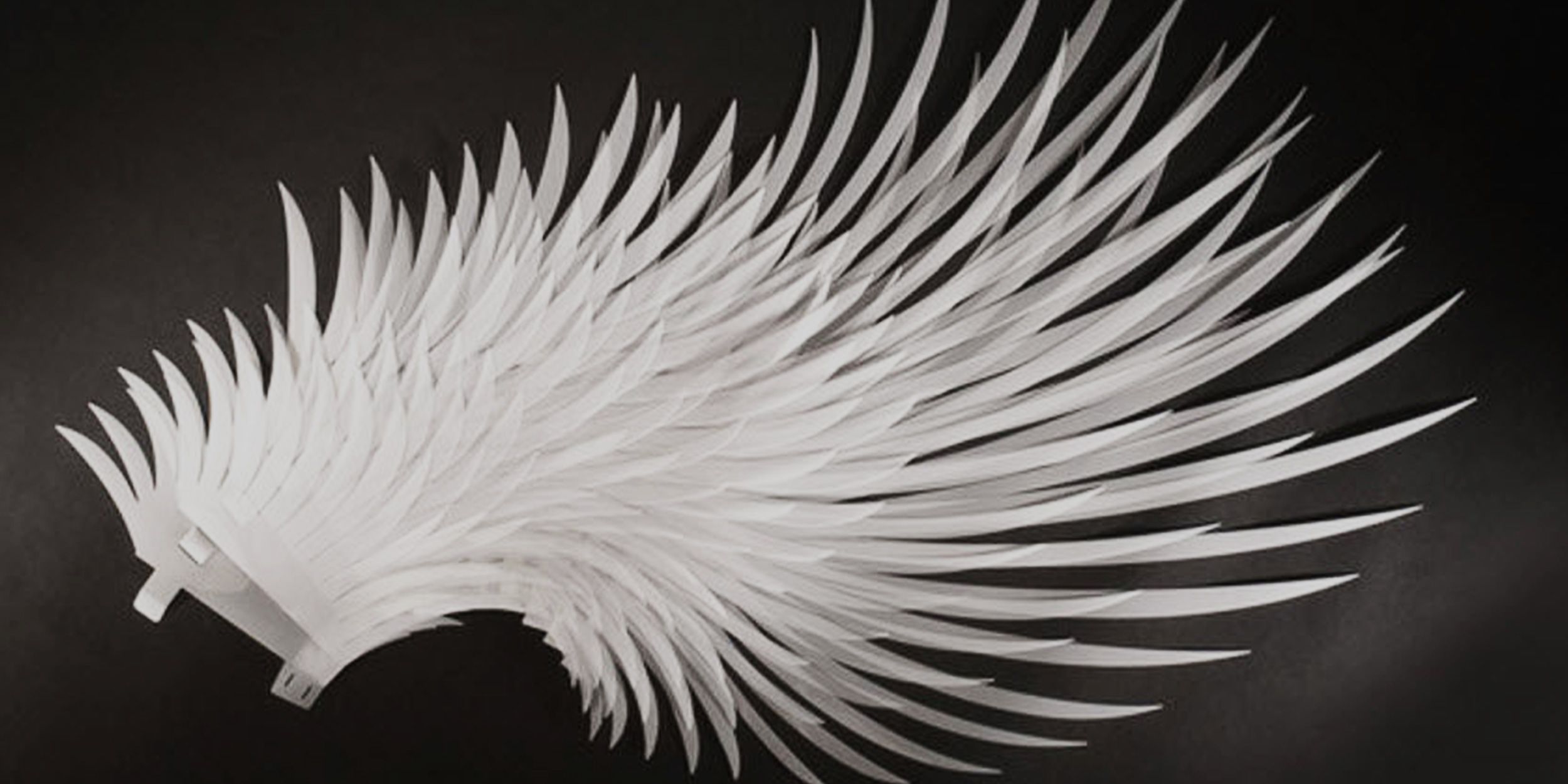
Tyvek® FAQs
Following frequently asked questions from designers about DuPontTM Tyvek® materials, here are professional answers from DuPont Materials experts.
Q: Is there a pros and cons of Tyvek®? Are there any differences in performance?
A: Tyvek® material has two sides, usually the smooth side is called the front side, the opposite side is the reverse side, the physical properties of both sides (such as waterproof, The intensity, etc.) are basically the same. Type 10 materials can be printed on both sides. Type 14 materials are recommended to be printed on a smooth surface; the physical properties of the material on both sides are basically the same.
Q: What is the dimensional stability of Tyvek® materials?
A: Tyvek® is dimensionally stable between -73 and 100 degrees, but under tension (such as web printing or coating compounding) ) In order to ensure that the material does not deform, it is necessary to control the oven temperature below 80 degrees.
Q: How waterproof is Tyvek®? Is there a big relationship between waterproof performance and cutting?
A: Tyvek® is waterproof. Its water resistance is not water proof. Generally, hydrostatic pressure index is used to indicate the waterproof performance of Tyvek® material. Tyvek® material in the general printing field is generally about tens of centimeters of water column; waterproofness and cutting are not relevant, but It is related to whether the overall material structure is damaged, such as hole punching, sewing, etc., which can cause water seepage after any changes in the overall structure of the material after sewing or punching.
Q: What is the breathability of Tyvek®? As a personal material, what are the more comfortable models?
A: Tyvek® has a certain degree of breathability, but its air permeability is still different from that of traditional fabrics. There is no significant difference in the air permeability of all models used for printing and packaging. Generally, it is not recommended for long-wearing personal materials (except labels). It has been widely used as a fashionable lightweight outerwear or functional lining fabric.
Q: What about the scalability of Tyvek®? Especially when applied to garments. How to solve the elastic ductility of similar fabrics, different types of Tyvek have differences in ductility?
A: Tyvek® is very strong and flexible, but it does not have much elasticity compared to conventional fabrics. This is a material. Its own characteristics. Fabrics can be made from stretchable fabrics at key locations; all models have little difference in ductility.
Q: How about the lightfastness of Tyvek®? If used as curtains or partition curtains.
A: Tyvek® materials have anti-ultraviolet properties and have been used maturely in many outdoor areas such as truck covers and agricultural mulch. For outdoor applications that require better UV protection, certain types of UV-enhanced models can be used to extend outdoor use. If curtains and partition curtains are used more indoors, the requirements for light resistance are less stringent than those for outdoor applications.
Q: Which model of Tyvek® is best for light transmission? If you want to do lamp shell? Good light transmission while protecting your eyes?
A: All models used for printing and packaging have little difference in light transmittance, but it is recommended to use higher grammage materials such as 1070D when considering the molding of lamp housings. , 1073D, 1082D and so on. Tyvek® is highly reflective and diffusely reflective so it does not produce glare, but professional eye protection concepts need to be evaluated from an industry perspective.
Q: Does Tyvek® have anti-mildew and anti-microbial properties?
A: Tyvek® material is anti-mould, anti-bacterial and anti-mite. It has been used in household products and bedspreads.
Q: What grade of nylon is equivalent to Tyvek®?
A: Tyvek® is non-woven and does not have data comparable to fabrics. We are also embarking on the evaluation of the surface wear resistance of Tyvek® materials and the results will be updated. However, if it is required that the abrasion resistance is relatively high, the coating material can be selected.
Q: What is the flammability of Tyvek®? What is the ignition point? Which model has the highest ignition temperature?
A: Tyvek® does not support combustion and is not flame retardant. Flame Retardant Ratings: Type 10 Materials Class A is in ASTM E84-89a, Class 14 class 1 at 16 CFR-1610; all models have a melting point of 135 degrees.
Q: Will the surface color or performance of Tyvek® materials change over time under weak acid conditions?
A: Tyvek® is resistant to common acids and bases. Refer to the Tyvek® Technical Instruction Manual. It can be downloaded from the “Materials & Technology” manual of the “Tyvek® Manual” on the menu of the “Weekly DuPont Tyvek Creative Living Museum” WeChat public number.
Q: Direct Solar Materials, Tyvek How does the temperature of the surface of the material rise?
A: In direct sunlight, the surface temperature of the material does not change much because about 90% of the light is Reflected.
Q: How is the folding resistance of Tyvek® material?
A: The flexibility of the material is good The folding and folding of the material will not cause damage to the material. The application of maps and book lights is a good example.
Q: Can Tyvek® be in direct contact with food?< /p>
A: Tyvek® models used in the general printing and packaging industry do not recommend direct contact with foods, and medical grade Tyvek® materials may be used.
< b>Q: What is the environmental friendliness of Tyvek® material and can it be degraded?
A: Tyvek® material is a high-density polyethylene non-woven fabric, 100% can be Recycled material, but cannot be degraded.
Q: How does Tyvek® print? Can you graffiti?
A Tyvek® can adopt all traditional printing methods or partial digital printing methods. For details, please refer to the technical guide (inquiries in the “WeChat Public Account of DuPont Tyvek Tyvek Creative Living Museum”); Tyvek® can also use graffiti. In general, the water-based pens can be used for cleaning graffiti, oil-based pens for permanent graffiti, and acrylic paints for graffiti on Tyvek®.
Q: Color fastness after Tyvek® printing How to improve?
A: To improve the printing fastness, inks should be used to meet the requirements of lightfastness.
Q: What kind of adhesive does Tyvek® use to bond better, and what physical way can it be stitched or bonded?
A: High solids water content Adhesives, or hot melt adhesives, etc. can all be used for Tyvek® bonding, and the supplied glue partners can be obtained from the website or the WeChat public account. If it is not mass-produced or just proofed, it is recommended to use the 3M superglue. Strong adhesive double-sided adhesive (Taobao can buy); physical methods such as sewing or ultrasound can also achieve stitching.
Q Will Tyvek® can be machined to wrinkle?
A: This can be done by washing or air wrinkling and selecting fabric post processing. Partners can provide processing in this area.
Q: If Tyvek® would require a hole-opening operation, the hole pitch and hole size would not affect the pull force and would not be easily torn open under normal use conditions. ?
A: As long as the hole is punched, its tensile strength will have an effect, regardless of size. As for normal use, it will not tear, depending on the actual application and conditions of use.
Q: Products made of Tyvek® require very good waterproofness.
A: First of all, it is necessary to understand how high the waterproofness of the application is. If it is only general waterproofing, generally the waterproof rubber strip after sewing can be used or waterproof glue can be used. Adhesion; consider using Tyvek® Laminates if you have high water resistance requirements.
Q: Can Tyvek® be cleaned or wiped with a cloth?
A: Tyvek® can be washed, gently washed with warm detergent, room temperature water, or machine-washed, naturally hung and dry, not machine dried, not dry cleaned , Or wipe with a damp cloth.
Q: Regarding the application of ready-to-wear garments, a brand was seen wearing a jacket and down jacket after using DuPont paper. Whether the clothing is wet after the film is hot?
A: It is not a PU film that is covered by a hot film. It can also be washed with water (same as the Tyvek® itself)
< b>Q: What is used as clothing, tear strength and seam slip?
A: There is no data on garments in this area. Generally, we will advise our customers to make self-assessments based on the application, but according to our knowledge, tear strength of garments and sewing needlework The selection is very large, and the Tyvek® material is a non-woven fabric that is not a weave-like material, and the existing national standard does not apply to the non-woven fabric material in terms of strength and seam slip requirements.
Q: Can the wrinkled Tyvek® material be ironed with an electric iron?
A: Ironing is not recommended because the melting point of the material is 135 degrees and the folds of the material are its own unique characteristics.
For more information, please click to download: DuPontTM Tyvek® User Guide.
